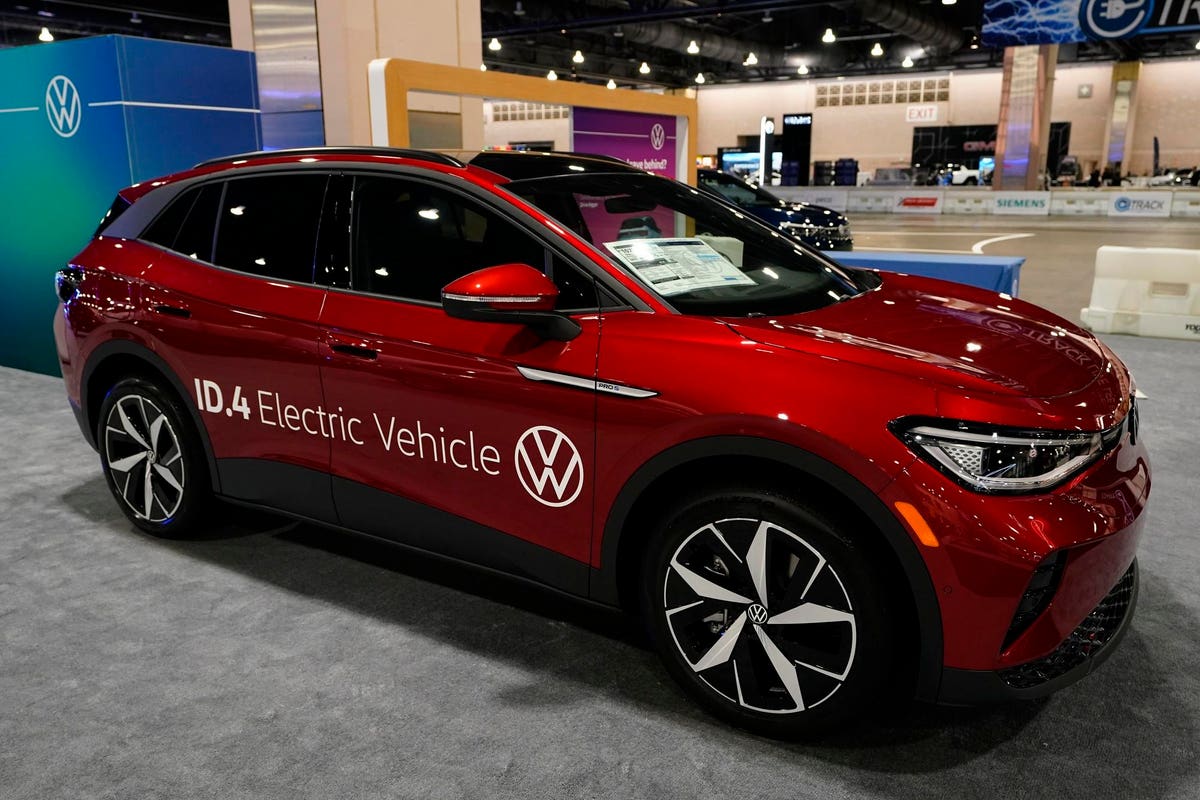Europe's Auto Industry Faces Headwinds Amidst Economic Slowdown

Table of Contents
Declining Consumer Confidence and Reduced Demand
Inflation and rising interest rates are significantly impacting consumer spending across Europe, and the automotive sector is feeling the pinch. Big-ticket purchases like cars are particularly vulnerable as consumers tighten their belts. This translates to:
- Reduced purchasing power leading to lower sales figures: Dealerships are reporting a noticeable drop in sales, particularly for new vehicles. The affordability crisis is pushing many potential buyers out of the market.
- Increased reliance on leasing and used car markets: Leasing provides a more affordable entry point to new vehicles, while the used car market is experiencing increased demand as consumers seek more budget-friendly options. This impacts the overall profitability of manufacturers.
- Shift in consumer preference towards smaller, more fuel-efficient vehicles: With fuel prices remaining high, consumers are increasingly opting for smaller, more economical vehicles, impacting the sales of larger, more luxurious models.
- Impact on premium car segment sales: The premium car segment, traditionally less susceptible to economic downturns, is also experiencing a slowdown, highlighting the widespread impact of the current economic climate on the entire automotive sector. This necessitates a reassessment of marketing and pricing strategies for these manufacturers.
Supply Chain Disruptions and Material Shortages
The automotive industry continues to grapple with persistent supply chain disruptions. Semiconductor chip shortages remain a major bottleneck, alongside shortages of other critical components. These challenges are leading to:
- Increased production delays and manufacturing bottlenecks: Factories are operating below capacity due to component shortages, leading to longer lead times for new vehicles and impacting production targets.
- Rising raw material costs, impacting profitability: The cost of raw materials, including steel, aluminum, and plastics, has skyrocketed, squeezing profit margins for automakers. This increased cost is often passed onto consumers, further depressing demand.
- Geopolitical instability exacerbating supply chain vulnerabilities: The war in Ukraine and other geopolitical tensions have created further instability in global supply chains, making it even more challenging for manufacturers to secure essential components.
- Strategies manufacturers are employing to mitigate supply chain risks: Automakers are actively diversifying their supplier base, exploring reshoring options, and investing in technologies to improve supply chain visibility and resilience. This includes investing in strategic partnerships and vertical integration.
The Rise of Electric Vehicles (EVs) and Transition Challenges
The transition to electric vehicles is accelerating, driven by stricter emission regulations and growing consumer demand. However, this transition presents considerable challenges for traditional automakers:
- High initial investment costs for EV production: Building EV production facilities and developing new EV models requires substantial upfront investment, posing a significant financial burden for many manufacturers.
- Development of charging infrastructure lagging behind EV adoption rates: The lack of a comprehensive and reliable charging infrastructure across Europe is hindering the wider adoption of EVs. Government investment is crucial to address this issue.
- Competition from established EV manufacturers: Established EV manufacturers are gaining market share, posing a significant competitive threat to traditional automakers who are still in the process of transitioning their product lines.
- Concerns about battery supply chains and environmental impact: Securing a sustainable and reliable supply of batteries for EVs, while minimizing the environmental impact of battery production and disposal, remains a key concern for the industry.
Government Regulations and Environmental Policies
Stricter emission standards and environmental regulations are fundamentally reshaping the European automotive landscape. These regulations are leading to:
- Increased compliance costs for manufacturers: Meeting increasingly stringent emission targets necessitates significant investments in new technologies and production processes.
- Incentives and subsidies for EV adoption: Governments are offering various incentives and subsidies to encourage the adoption of EVs, aiming to accelerate the transition to a greener transportation system.
- Potential for carbon tax implications: The potential introduction or expansion of carbon taxes could further increase the cost of manufacturing and operating internal combustion engine vehicles.
- Impact on the future of internal combustion engine vehicles: The future of internal combustion engine (ICE) vehicles is uncertain, with many predicting a significant decline in their market share in the coming years.
Conclusion
Europe's auto industry is navigating a complex and challenging landscape. The combination of economic slowdown, supply chain disruptions, the transition to electric vehicles, and evolving government regulations presents significant headwinds. Manufacturers are actively adapting through diversification, technological innovation, and strategic partnerships. However, the future success of Europe's auto industry depends on addressing these challenges proactively. Understanding the challenges facing Europe's auto industry is crucial for investors, policymakers, and industry professionals alike. Further analysis of these trends and proactive strategies are essential for the sector's long-term resilience and future growth. Stay informed on the latest developments affecting Europe's auto industry to navigate this complex period successfully.

Featured Posts
-
 The Nine Points That Cost Ajax The Championship A 99th Minute Heartbreak
May 28, 2025
The Nine Points That Cost Ajax The Championship A 99th Minute Heartbreak
May 28, 2025 -
 Via Rail Strike Looms Unifor Mandate Could Halt Service By June 22
May 28, 2025
Via Rail Strike Looms Unifor Mandate Could Halt Service By June 22
May 28, 2025 -
 Viktor Gyoekeres Istatistikler Performans Ve Attigi Goller
May 28, 2025
Viktor Gyoekeres Istatistikler Performans Ve Attigi Goller
May 28, 2025 -
 Liverpools Transfer Plans Two Exciting Wingers And The Salah Contract Situation
May 28, 2025
Liverpools Transfer Plans Two Exciting Wingers And The Salah Contract Situation
May 28, 2025 -
 Stowers And Conine Power Marlins To Victory Over Nationals
May 28, 2025
Stowers And Conine Power Marlins To Victory Over Nationals
May 28, 2025
Latest Posts
-
 Menu De Emergencia 4 Recetas Deliciosas Sin Luz Ni Gas
May 31, 2025
Menu De Emergencia 4 Recetas Deliciosas Sin Luz Ni Gas
May 31, 2025 -
 Foire Au Jambon Bayonne Lecons A Tirer Du Deficit De 2025 Et Perspectives D Avenir
May 31, 2025
Foire Au Jambon Bayonne Lecons A Tirer Du Deficit De 2025 Et Perspectives D Avenir
May 31, 2025 -
 Recetas Faciles Y Rapidas Para Apagones Sin Luz Ni Gas
May 31, 2025
Recetas Faciles Y Rapidas Para Apagones Sin Luz Ni Gas
May 31, 2025 -
 Foire Au Jambon Bayonne 2025 Analyse Des Frais D Organisation Et Du Deficit Enregistre
May 31, 2025
Foire Au Jambon Bayonne 2025 Analyse Des Frais D Organisation Et Du Deficit Enregistre
May 31, 2025 -
 Cuatro Recetas De Emergencia Preparate Para Un Apagon Y Come Rico
May 31, 2025
Cuatro Recetas De Emergencia Preparate Para Un Apagon Y Come Rico
May 31, 2025
